
Laboratory of Nanomaterials
The Laboratory of Nanomaterials (Group of Materials Research with Neutron and Ion Beams - MRNIB) deals with the preparation, characterization, and modification of thin films of multinary materials with a complex nanostructure (MAX phases, metal-fullerene-based hybrid systems, etc.), and with the investigation of their specific physical properties. The study of nanomaterials (i.e., research on their fundamental properties and their possible practical use) is carried out using various deposition techniques and analytical methods developed in the CANAM infrastructure at the NPI of the CAS.
Deposition techniques:
The Laboratory of Nanomaterials is equipped with several deposition techniques that make it possible to prepare thin films of multi-elemental composites with a complex structure controlled down to the nanometric scale – in particular, methods of ion beam sputtering, molecular beam epitaxy, and physical vapor deposition.
The thin films are prepared using the low energy ion facility (LEIF) with ion beams in the energy range 0-35 keV, the molecular beam epitaxy (MBE) system equipped with a few e-gun evaporators, high-temperature effusion cells, and ion etching gun, and the UNIVEX systems with the e-gun and thermal-effusion evaporators.
- DUOPLASMATRON
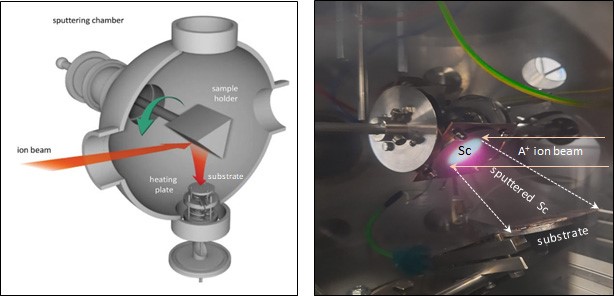
Principle of the ion beam sputtering Ion beam sputtering of scandium using Ar+ ion
beam in the Duoplasmatron deposition system
- LEIF (Low Energy Ion Facility)
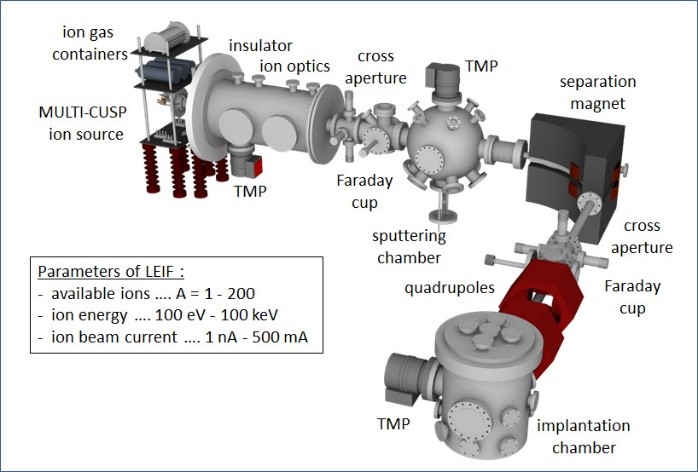
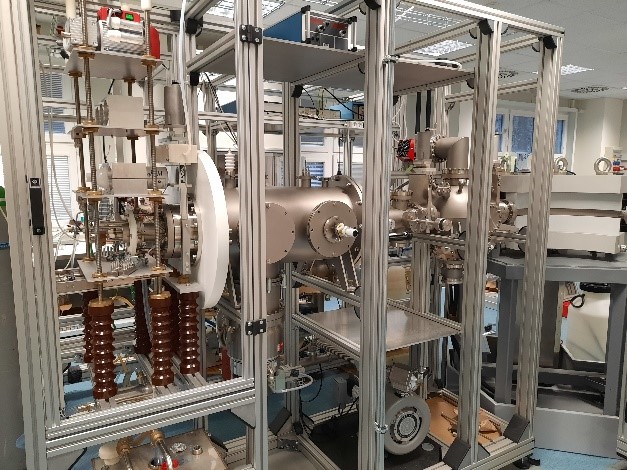
Sketch of laboratory-designed Low Energy Ion Facility Ion source and sputtering chamber of LEIF
- MBE (Molecular Beam Epitaxy)
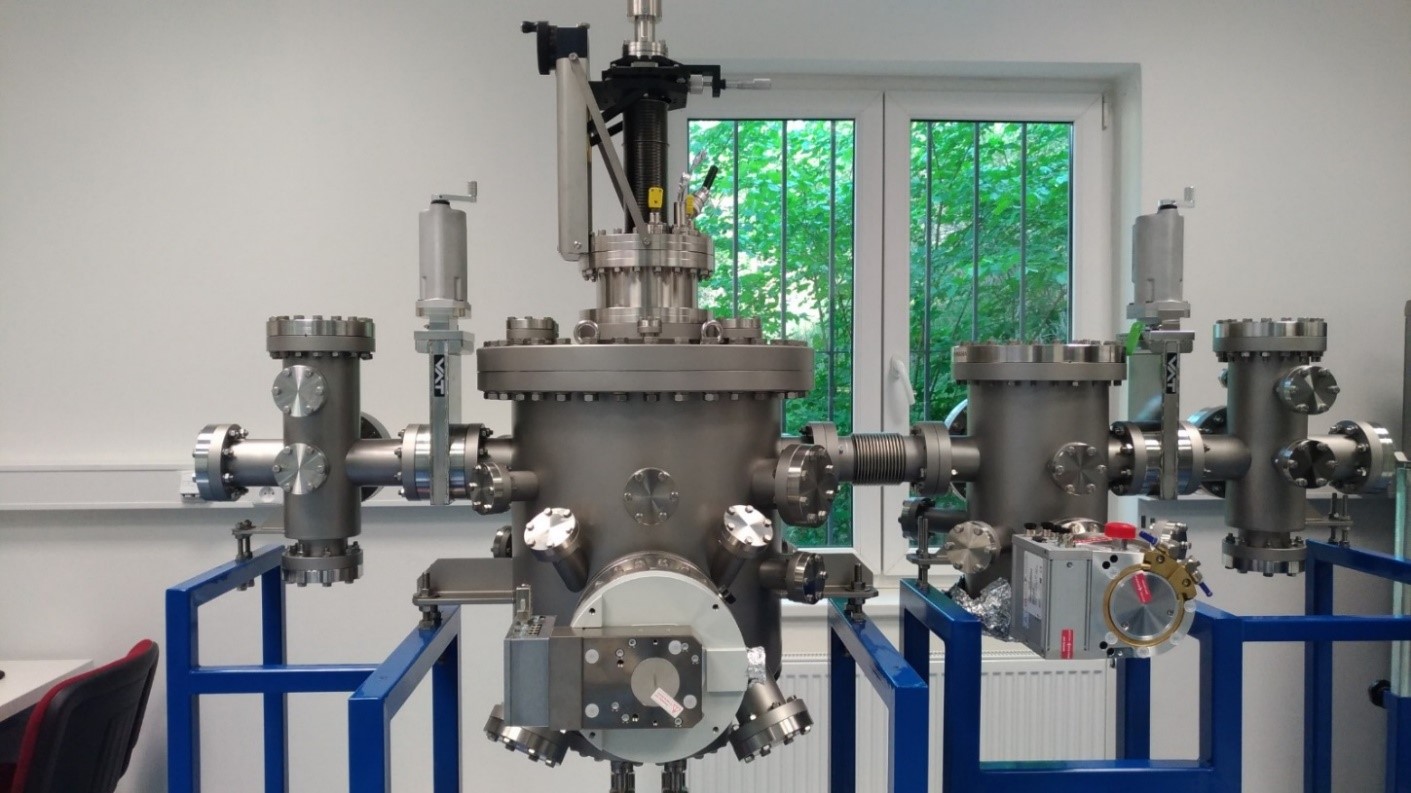
Laboratory-designed molecular beam epitaxy system: main and auxiliary MBE chambers and load-lock cells
- UNIVEX (Leybold)
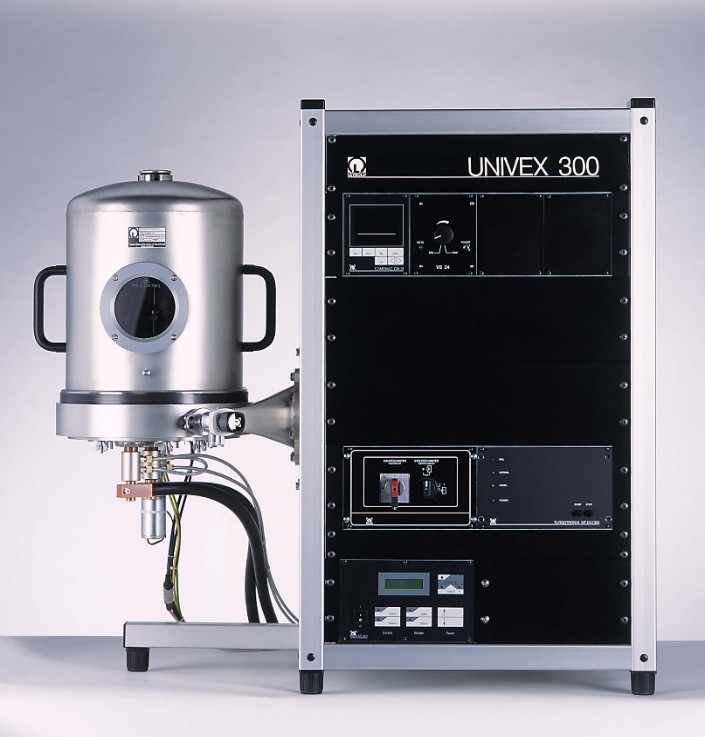
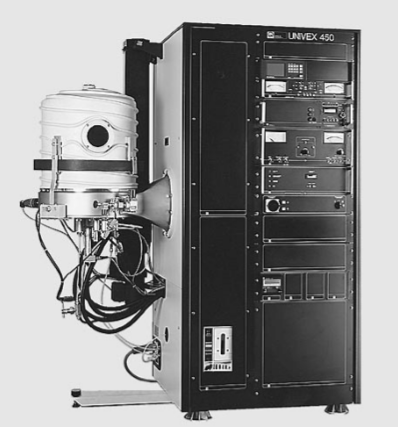
Original multi-purpose high-vacuum experimentation systems Univex-300 and Univex-450
Analytical methods:
The analysis of the prepared (or modified) thin layers is carried out using several basic methods that are available in the laboratory of the MRNIB group or the laboratories of the CANAM infrastructure: the AFM (Atomic Force Microscopy) method, VDP (van der Pauw) method, NBA (Neutron Beam Analysis) methods – NDP (Neutron Depth Profiling) and PGAA (Prompt Gamma Activation Analysis), and IBA (Ion Beam Analysis) methods.
- The AFM method, together with various associated modes such as MFM (Magnetic Force Microscopy), LFM (Lateral Force Microscopy), and EFM (Electric Force Microscopy), makes it possible to measure the main surface properties of materials (morphology, friction and wear, chemical structure of molecules, etc.) with a high resolution (down to the nanometer level). The method is performed on the NTEGRA Aura Scanning Probe Microscope (NT-MDT) in the tapping and contact modes.
- The VDP method measures the average resistivity and Hall coefficient values on thin samples by applying current and measuring the voltage along the sample perimeter. This allows various structures to be evaluated.
- The NDP method is intended for measuring the depth (or spatial) distribution of some light elements (e.g., Li, B, N) as well as heavy elements (e.g., Cl, Sm, Eu) in thin layers of materials. The method is based on the reaction of thermal neutrons of the (n,alpha) type with the given elements (more precisely, some of their isotopes) and the registration of residual energy of the reaction products. The PGAA method measures gamma quanta from neutron radiation capture and enables the determination of elements in samples. Both methods are located on a short mirror-type neutron-guide at the horizontal channel of the LVR-15 reactor (operated by the Centrum výzkumu Řež).
- IBA methods (RBS – Rutherford Backscattering, PIXE – Particle Induced X-Ray Emission, MB – Micro Beam methods, ion beam irradiation/implantation, etc.) are installed on the ion beam lines of the Tandetron 4130 MC accelerator. The methods are available in cooperation with the Tandetron group of the CANAM infrastructure.
- AFM (Atomic Force Microscopy)
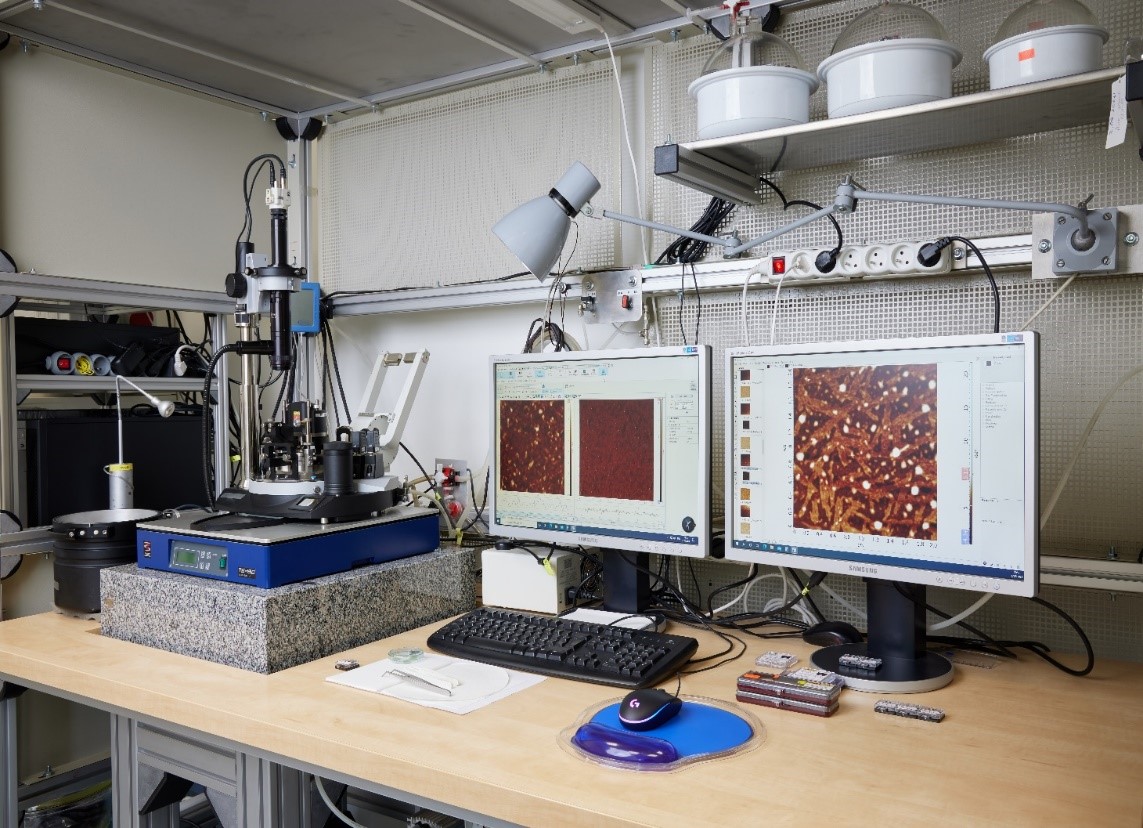
NTEGRA Aura Scanning Probe Microscope (NT-MDT)
- VDP (van der Pauw)
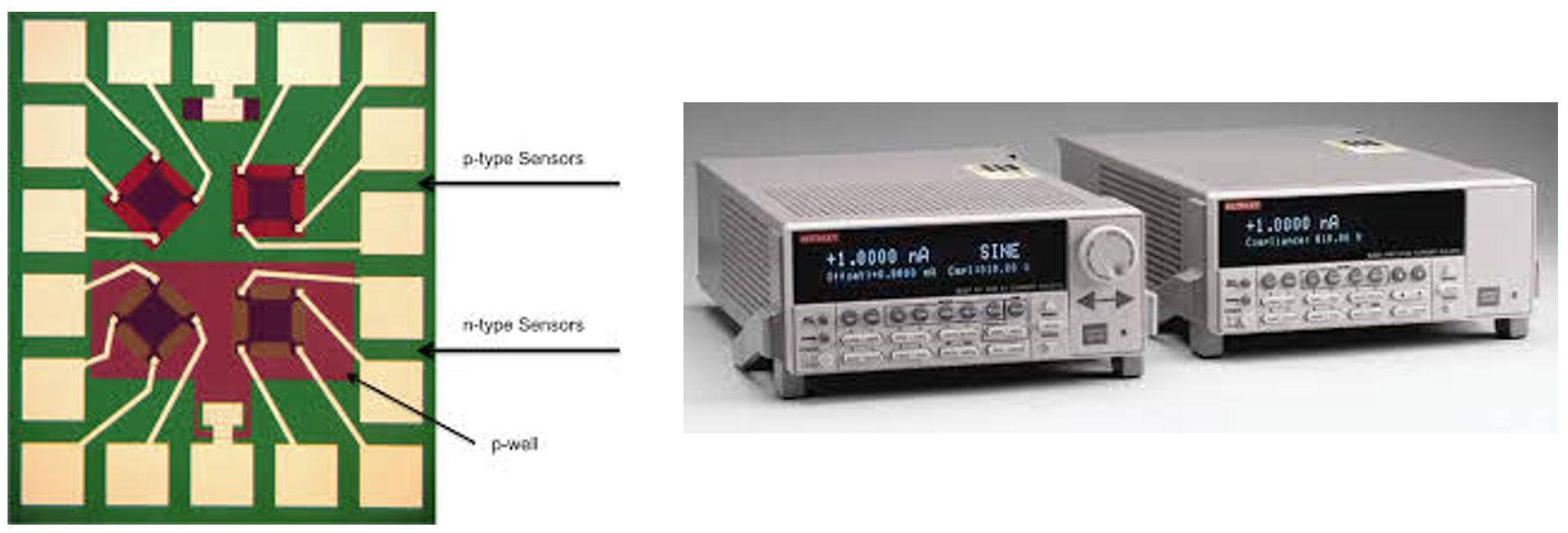
Sketch of van der Pauw principle - four-wire method for resistivity and Hall voltage of samples
- NDP (Neutron Depth Profiling)
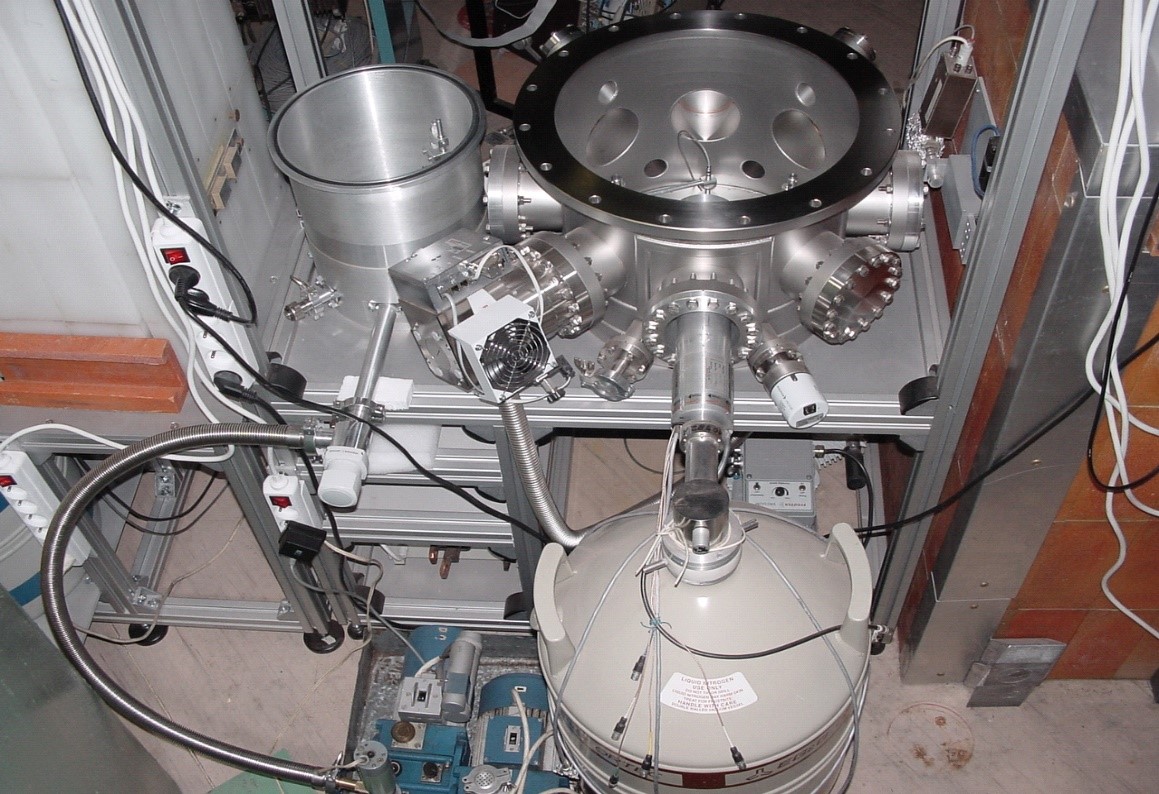
NDP spectrometer
Sample modification methods:
Modification of the prepared materials can be carried out at various stages of the study. It is performed by the keV/MeV ion beams (on the LEIF and Tandetron accelerator) with fluences as needed, high-temperature high-vacuum thermal annealing (laboratory-designed oven), chemical etching/doping (in the commercial etching reactor), and by some other ways.

